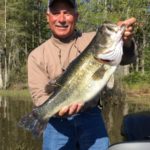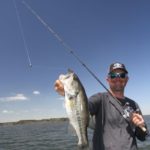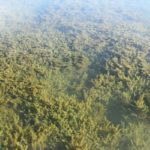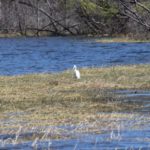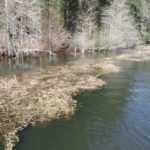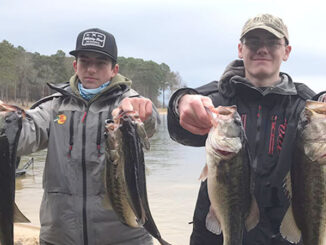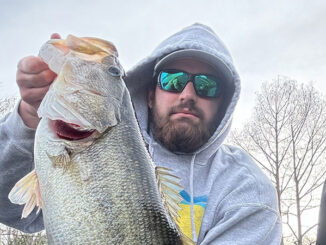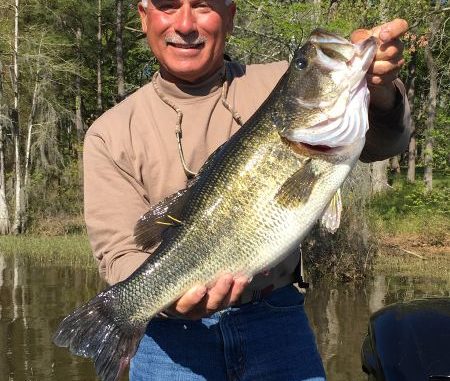
Toledo Bend’s big girls don’t disappear after the spawn. In fact, these two proven anglers know these big bass might be even more inclined to bite during the post-spawn. Here are some tips.
There’s no time when Toledo Bend guide Dave Mansue isn’t in love with this Sabine River impoundment.
However, his fondness takes a noticeable upturn during the post-spawn.
Put it this way: When Bassmaster Magazine ranked this Louisiana powerhouse reservoir tops in the nation, many likely envisioned scores of giant mossbacks flooding the shallow spawning pockets.
A fun time, for sure, but Mansue pointed out the attraction of targeting bass in their late-spring transition.
“The lake has a lot of fish, and it has a lot of big fish — so anytime you fish on a lake where any cast can be rewarded with a big fish, that’s exciting,” he said. “These fish store up energy all winter to get ready for the spawn, and when they finally spawn, they’re hungry.
“They’ll eat all through the day, from early morning to late in the day. It’s just a fun time to be on the lake because you know you’re going to catch a lot of fish. You can catch them a bunch of different ways.”
And consider the natural funneling effect of post-spawn movements.
Compared to the main lake’s vastness, spawning pockets and shallow flats are relatively narrow, confined areas. Therefore, when each wave of the spawn concludes, the post-spawn fallback spots get pretty crowded.
“Quite often you can catch them bunched up, and usually they’ll be bunched up by size,” Mansue said. “If you catch a good fish, you can expect that other fish are there, as well.”
Nick LeBrun, a tournament pro from Bossier City, said many of the lake’s lunkers are more likely to get caught during this time.
“Toledo (Bend) is known for having a lot of big fish — a lot of big females,” LeBrun said. “And many of the big females don’t get caught while they’re on the bed.
“So when they move out, they might be more vulnerable, whereas they might not bite a lure while they were on the bed. Sometimes, the post-spawn bite can be just as good as the pre- or spawning bite.”
And there’s plenty of opportunities for every angler hitting the lake.
“It’s really a numbers game,” LeBrun said. “You have a lake that’s big enough so everybody can spread out. There are so many creeks (that) everybody’s not focused on one area of the lake.
“There are phenomenal opportunities to catch several big fish, not just one.”
Of course, you can’t expect to simply stumble across such aggregations of hunger-driven post-spawners, so we asked Mansue and LeBrun to share some of their seasonal strategies for dialing in this abundant bite.
Following is a roundup of their suggestions.
Go to the grass
Description: Recent high, dirty water has hurt the lake’s hydrilla, Mansue said.
But certain areas on the south end of the lake are seeing a grass resurgence, so if you can find an area with hydrilla in 8 to 10 feet of water, this offers prime post-spawn habitat with lots of cover and feeding opportunities.
When it’s good: “In that depth, I like early morning before the sun gets up really high,” Mansue said. “The fish are moving around over top of (the grass) and chasing bait. I think they’re much easier to catch at that point.
“But when the sun gets high and really starts to penetrate through the water column and down into that grass, a lot of times the bite will shut off, and you really have to slow down to get bit.”
How to fish it: When the baitfish are small, Mansue likes to throw a Missile Baits Shockwave swimbait on a ½- to ¾-ounce Swimbait head with a weed guard.
When the forage is larger, he’ll go to a 4.8-inch Keitech swimbait.
Mansue mostly uses shad colors, but later in the post-spawn, he’ll use bream patterns to mimic bedding panfish — a favorite post-spawn meal.
With either, Mansue keeps his presentations high in the water column.
“You want to just tickle the top of the grass, as opposed to digging into it,” he explained. “You don’t want it to go too deep.”
When the suns gets up and the fish drop into the shady interior of the vegetation, Mansue switches to a Texas-rigged worm in green pumpkin, watermelon or redbug. Or he pulls out a Carolina rig tipped with a Zoom Baby Brush Hog in watermelon candy or watermelon/green pumpkin.
“It’s really important to use a proper weight,” Mansue said of the deeper grass presentations. “Sometimes people use a weight that’s too heavy, and it digs down in the grass.
“I’ve gone as light as a 3/8(-ounce weight), but typically I’ll throw a ½-ounce weight over the top of that grass ….”
He said he wants his Texas or Carolina rigs to penetrate the grass, but he doesn’t want either to actually reach bottom.
“You’ll feel the worm coming over clumps of grass, and as it falls you’ll just lose contact with it, and that’s when they’ve got it,” Mansue said.
Well, hay there
Description: Hay grass, that stalky, golden brown vegetation sprouting in random clumps and lengthy stretches offers post-spawners the right kind of recovery habitat.
And just about all the creeks south of the Pendleton bridge hold plenty of this stuff.
“When those females get off the beds, they just want to rest and eat,” LeBrun said. “The hay grass gives them a secluded place to hang out and ambush stuff that’s mixed in the hay grass or swimming by.
“It’s like a hotel with an endless buffet.”
While windy, overcast conditions bode well for chunking and winding, LeBrun wants sunny, calm conditions when focusing on hay grass because it pulls bass tight to the cover where they’re more easily targeted.
How to Fish It: LeBrun punches hay grass with a V&M Cliff Pace Wild Craw beneath a ¾- to 1 ½-ounce Elite Tungsten punch weight.
This rig allows him to invade the fish’s space and quickly determine if they’re interested or not.
“That punch weight gets down there to a few of the fish that aren’t going to bite a Senko or chase a spinnerbait,” LeBrun said. “I never beg a fish to bite, so I like to develop a rhythm and be very methodical. That way you’re not wasting a ton of time on one little area.
“You’re using a heavy enough weight to get it in there and get it out. You want to cover water, but you don’t want to have any missed opportunities. So it’s important to develop that right rhythm to be efficient.”
LeBrun said he wants his bait to fall smoothly to the bottom without having to work it through the cover with his rod.
Reaction bites are what he wants.
“The fish will either hit your bait on the way down, or the fish will follow the bait down to the bottom and pick it up as soon as it hits the bottom,” LeBrun explained. “When you raise the rod, it will feel spongy because they’re just sitting there with it.”
Get to the point
Description: Mansue targets long points just outside of major spawning grounds such as Six Mile Creek and Housen Bay.
Preferring points drop quickly into deeper water, and Mansue knows there won’t just be one or two fish in such spots.
“You can graph these spots, and when you find them stacked like that, you can run a crankbait through them and get them fired up,” he said.
How to fish it: Mansue likes a Rapala DT16 in the smash color, or anything with chartreuse and blue back.
“You have to find (a crankbait) that will run true on 12- to 14 pound fluorocarbon,” he said. “With all the trees down there, if you throw 8- to 10-pound (line), you’re going to lose a lot of crankbaits.”
In addition to cranking, LeBrun suggests dragging Carolina rigs or football head jigs across main-lake points.
The inside line
Description: In addition to punching hay grass, LeBrun also checks the zone between the grass and the bank. Ideal spots are those with hay grass in 3 to 5 feet of water and a foot or 2 off the banks — especially with cypress trees present.
“Mornings are best, because the first hour of daylight is irreplaceable,” LeBrun said. “If the water is clear and the fish are shallow, they don’t want to come up and eat something on the surface (later in the morning).
“So if there is a frog bite, it will show itself in that first hour.”
How to fish it: LeBrun hits this inside zone with a frog — something that appeals to post-spawners starting to key on bream beds.
If the shad are spawning, all the better.
Braid is a must for frogging around any kind of cover, butLeBrun downsizes his line to 40-pound test because he often needs to skip the bait into tight areas.
Play the conditions
The post-spawn typically coincides with the onset of more-stable weather periods, but that doesn’t mean it’s all smooth sailing.
“A cold front will pop up now and then, while heavy rains will affect the fish, as well,” Mansue said. “There’s not much you can do about that, but if the water’s muddy the fish get used to it after a couple of days. They have to feed at some point.
“A cold front will pass, but during the front the best thing to do is slow down. Typically, the fish will drop down in the water column, and you can catch them on the bottom.”
The main thing is to stay after these post-spawn fish. They can get pretty temperamental when fluctuating weather rattles their cage.
But once they get over a couple bad hair days, it’s game on.
